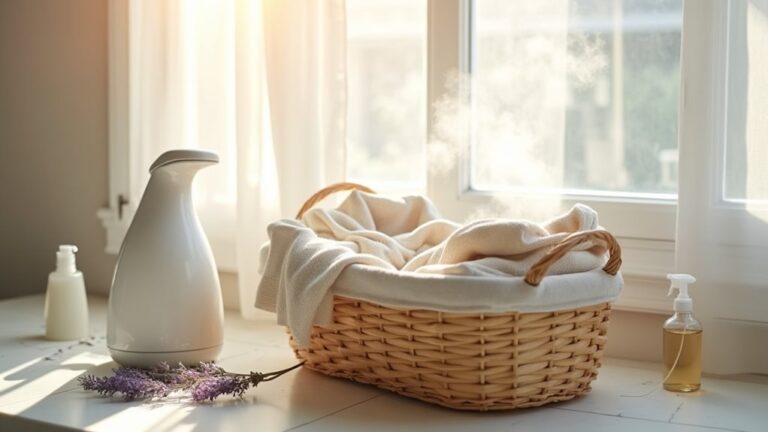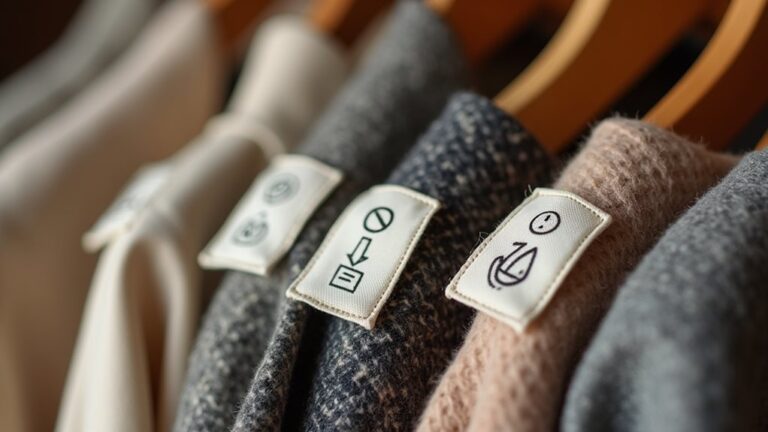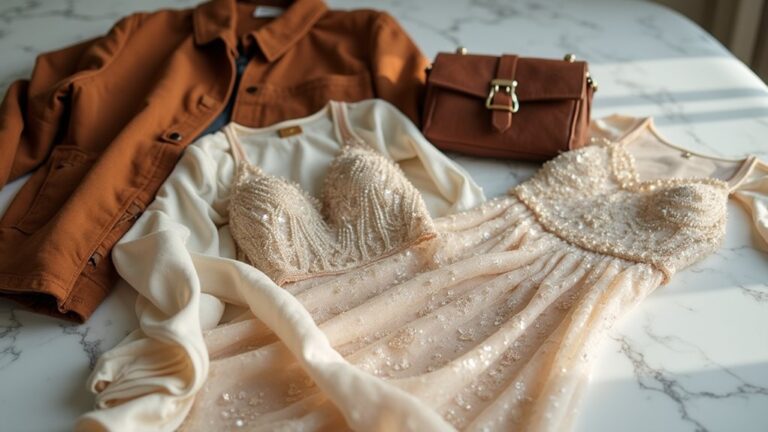Home dry cleaning kits work well for revitalizing clothes and tackling light wrinkles, but they’re basically fancy steamers rather than true dry cleaners. You’ll get great results on silk blouses and wool sweaters that just need a quick pick-me-up, though don’t expect miracles on that red wine stain from last weekend’s dinner party. At $10-20 per kit versus $15+ per garment professionally, they’re budget-friendly for maintenance cleaning, and there’s much more to discover about maximizing their effectiveness.
What Are Home Dry Cleaning Kits and How Do They Work
Convenience has become the holy grail of modern living, and home dry cleaning kits promise to deliver that convenience right to your laundry room, though I’ll admit I was pretty skeptical when I first spotted these mysterious boxes on store shelves.
Those mysterious boxes on store shelves promised laundry room convenience, but my skepticism ran deep until I actually tried them.
These kits typically include a special Mylar foil bag, a stain remover stick for tackling light stains before treatment, and a dryer sheet that works its magic through steam.
You’ll place your garments in the bag with a moist towelette, then toss everything into your dryer on medium to high heat for about thirty minutes.
The steam generated freshens clothes and removes wrinkles, though it’s not quite the same as professional dry cleaning 😅.
Unlike traditional dry cleaning that uses chemical solvents like perchloroethylene, these home kits rely on heat and moisture to clean and refresh your garments.
Effectiveness of At-Home Dry Cleaning on Different Fabric Types
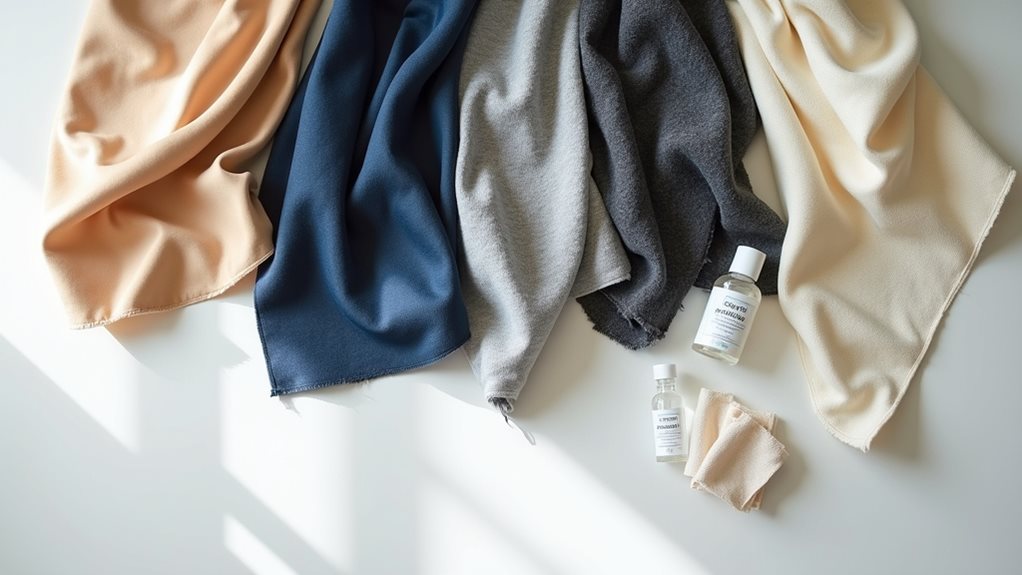
Different fabrics respond to home dry cleaning kits like guests at a dinner party—some thrive in the environment while others feel completely out of place, and honestly, I learned this the hard way after ruining a favorite cashmere sweater during my early experimentation days.
The fabric type you’re dealing with determines whether you’ll get clean clothes or costly mistakes, so let’s break down what works:
- Delicate darlings (silk, cashmere, wool): These love gentle at-home treatment and respond beautifully to spot cleaning.
- Cotton classics: Handle home kits well for light rejuvenation and odor removal.
- Structured pieces: Often need professional attention for best results.
- Beaded/sequined items: Skip the home kit—too risky.
- Leather/suede: Absolutely avoid DIY dry cleaning kits.
When tackling different stains, it’s crucial to use specialized solvents designed for specific fabric types to avoid permanent damage.
Limitations and What These Kits Cannot Clean
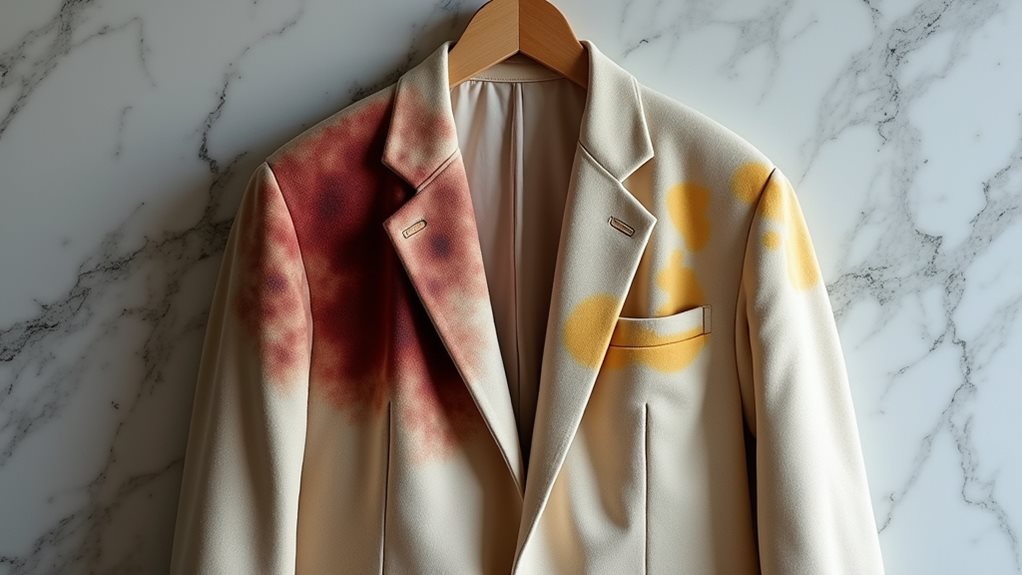
Although home dry cleaning kits market themselves as miracle solutions, they’re honestly more like that friend who promises to help you move but only shows up with a small car—well-intentioned but limited in what they can actually handle.
When you try to dry clean at home, you’ll quickly discover these kits’ major limitations: they simply can’t tackle heavy stains like red wine, grease, or makeup that’s been ground into fabric.
Those delicate items you’re hoping to refresh? Heavily beaded dresses and sequined tops might actually suffer damage from the steam process.
The Mylar bag and dryer sheet combo focuses on freshening and light wrinkle removal, not deep cleaning, so don’t expect miracles with that mysterious stain from last month’s dinner party.
For expensive or extremely delicate items like silk garments or structured wool suits, professional dry cleaning remains the safest option to avoid costly damage.
Cost Comparison: Home Kits Vs Professional Dry Cleaning
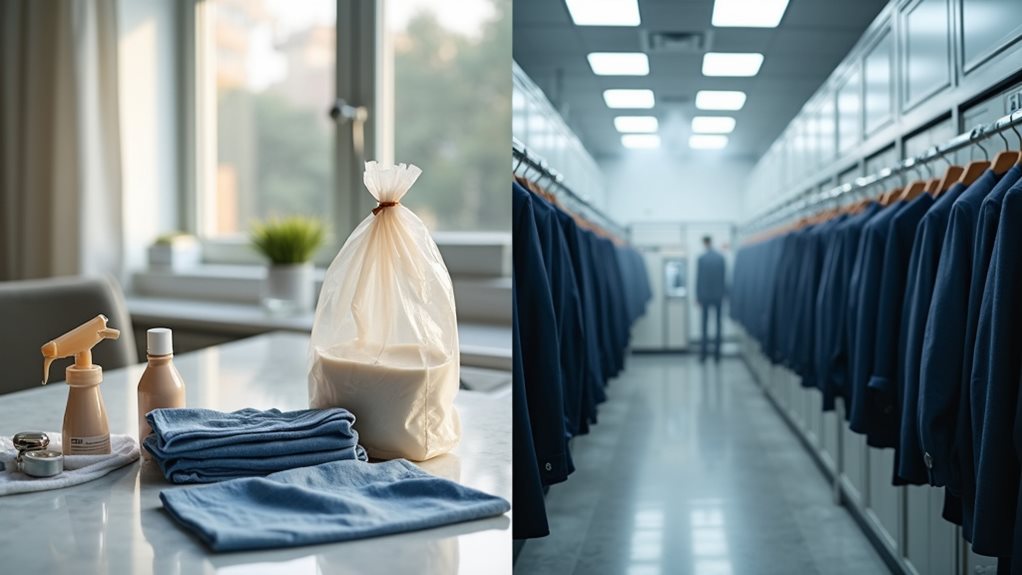
Beyond these performance limitations, your wallet will probably appreciate knowing that home dry cleaning kits offer some genuinely compelling savings compared to professional services.
When you’re doing a cost comparison between home dry cleaning kits and professional dry cleaning, the numbers tell a pretty clear story that’ll make your budget smile.
Here’s what you’re looking at financially:
- Home kits cost $10-$20 for starter packages that clean 16-24 garments
- Professional services charge $10-$30 per individual item
- You’ll save up to 50% with home kits versus frequent professional visits
- Annual dry cleaning bills can reach hundreds of dollars easily
- Home kits provide multiple uses from one purchase
This budget-friendly alternative works especially well if you’ve got several garments needing regular maintenance, making those savings add up faster than you’d expect.
These home kits work best as maintenance cleaning solutions between professional services rather than complete replacements for specialty fabrics requiring expert care.
Step-by-Step Guide to Using Home Dry Cleaning Kits
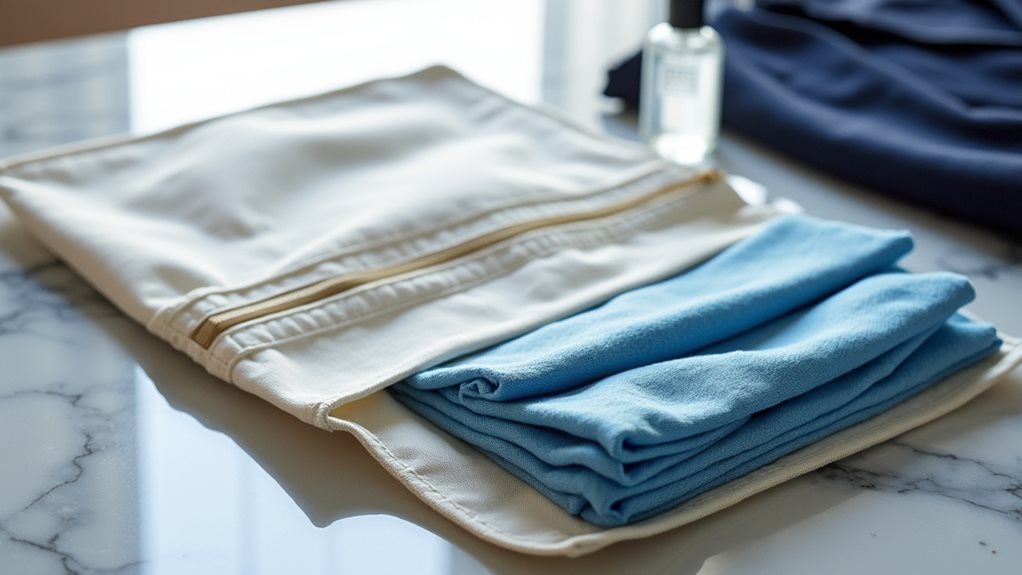
Once you’ve decided to give home dry cleaning a shot, the actual process becomes surprisingly straightforward, though I’ll admit my first attempt looked more like a science experiment gone wrong than proper garment care.
Start by spot-treating stains with the included remover and absorbent pads—trust me, this step matters more than you’d think.
Don’t skip the pre-treatment phase—those stain removal pads are your secret weapon for professional-looking results at home.
Next, place your garments in the resealable bag with a moist towelette, but don’t overstuff it like I did my first time 😅.
Set your dryer to medium-high heat for thirty minutes, letting steam work its magic. The moment that cycle ends, hang everything immediately to avoid damage.
Always check the manufacturer’s instructions first—these clean kits work best when you follow the rules, and certain fabrics simply aren’t compatible with home dry cleaner systems.
Keep in mind that these kits work best on garments labeled as “dry clean only” that need occasional maintenance rather than intensive cleaning for heavy stains or deeply embedded dirt.
Safety Considerations and Chemical Exposure
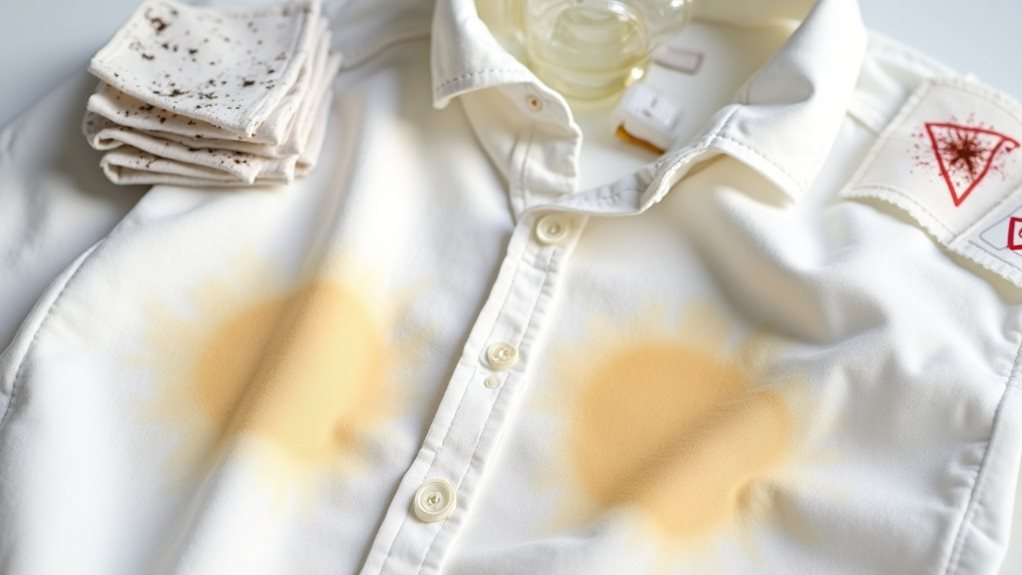
While following those kit instructions feels simple enough, I learned the hard way that understanding what’s actually in those little cleaning sheets matters just as much as getting the process right.
Those safety considerations everyone glosses over? They’re there for good reason, because chemical exposure from home kits can mirror the same health risks you’re trying to avoid at professional cleaners.
Here’s what caught me off-guard about these supposedly eco-friendly alternatives:
- Solvents in cleaning sheets can trigger skin irritation and allergic reactions
- Poor ventilation during use amplifies chemical exposure risks
- Direct contact with cleaning materials should be avoided completely
- Environmental impact remains concerning despite “green” marketing claims
- Chemical components often contradict truly non-toxic cleaning expectations
Many home dry cleaning kits still contain solvents that can cause neurological problems and other health issues with repeated exposure.
Trust me, reading those tiny warning labels isn’t optional—it’s crucial homework.
Alternative Methods for Cleaning Delicate Garments at Home
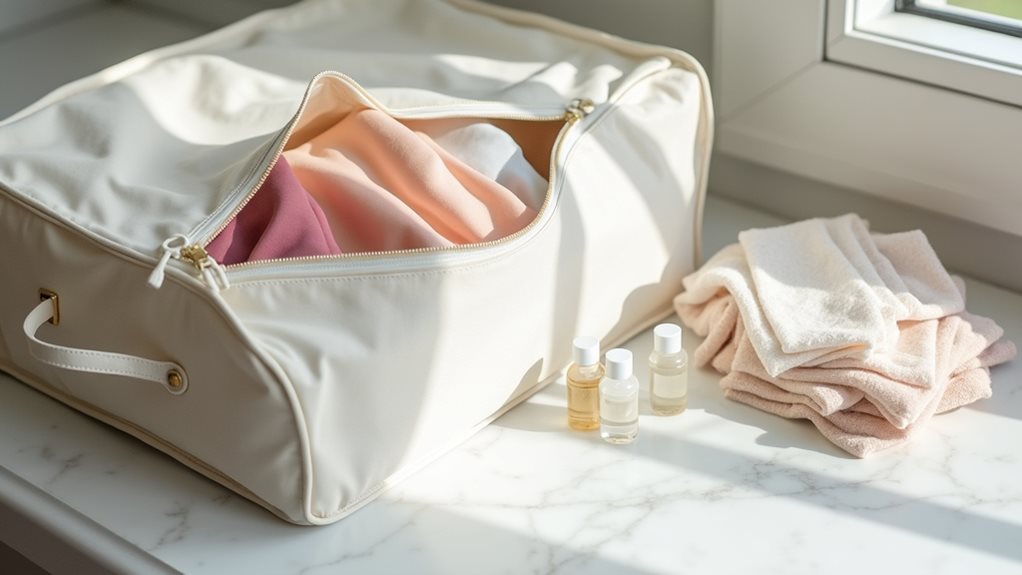
After discovering that home dry cleaning kits come with their own chemical baggage, I started exploring gentler alternatives that actually work better for most delicate garments—and honestly, I wish someone had told me about these methods years ago.
You can clean wool sweaters at home using a mesh bag and gentle soap, since wool’s actually more resilient than you’d think.
For stains, I mix equal parts white vinegar and water for spot treatments that won’t damage delicate fabrics.
Steam cleaning with a clean white sock over your steamer removes wrinkles beautifully, while simply airing clothes outside naturally refreshes them without any kit chemicals whatsoever.
These methods beat expensive professional cleaning for lighter items every time.
While home dry cleaning kits can be useful for odor removal and light refreshing, they work best on garments that aren’t heavily soiled.


